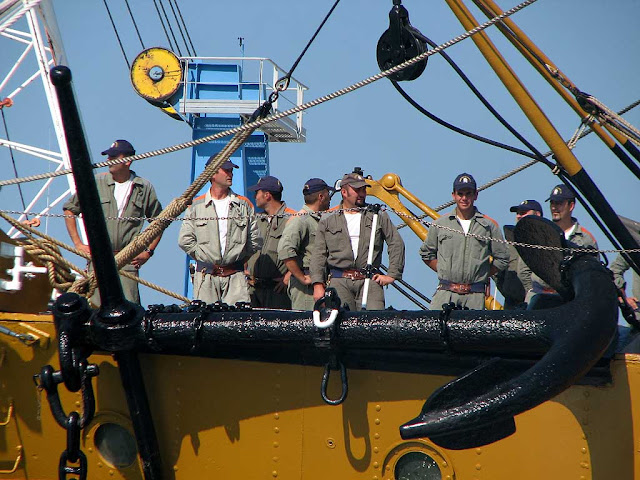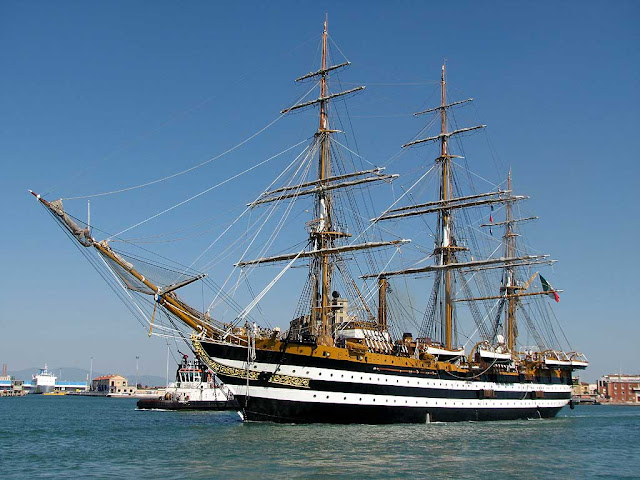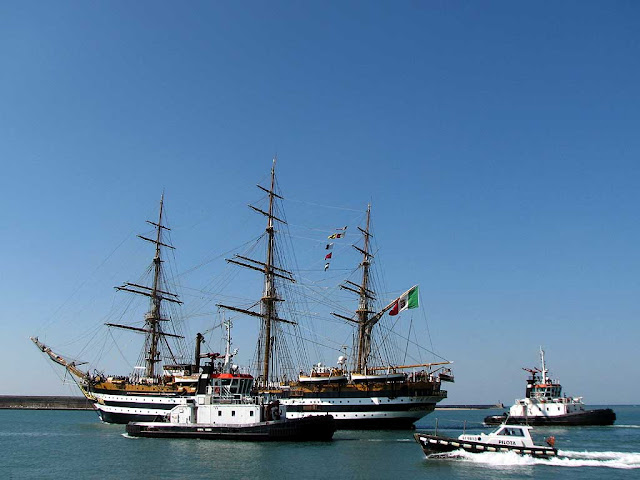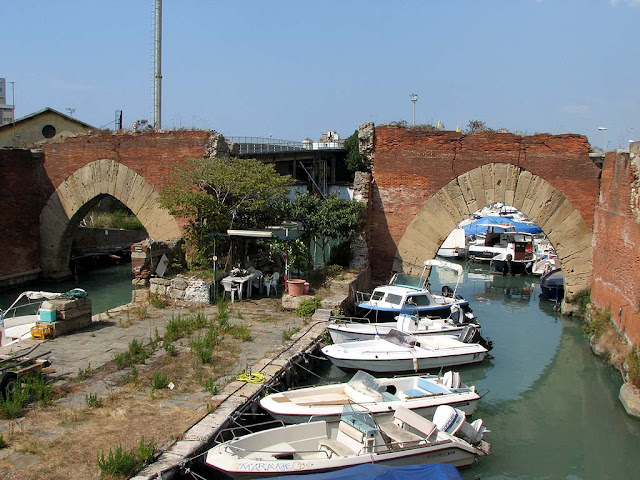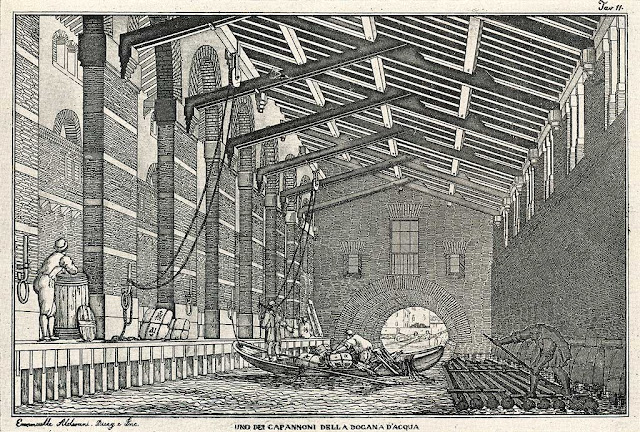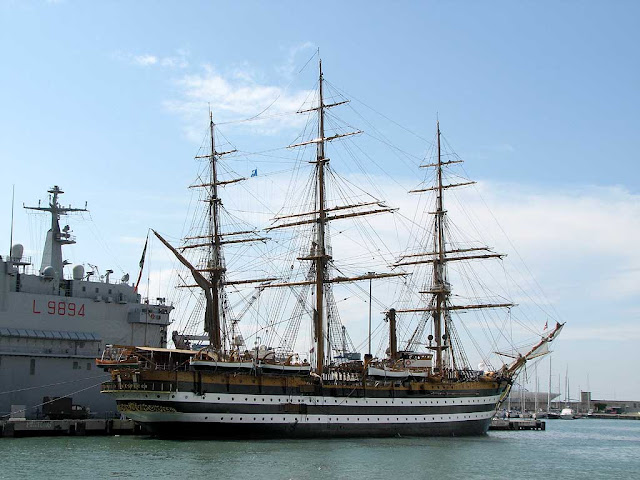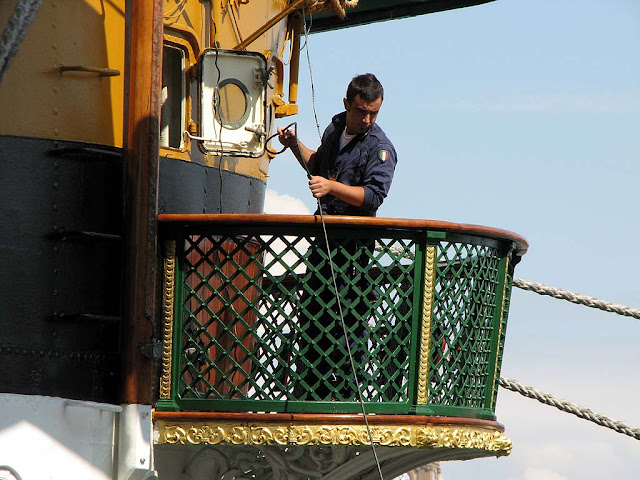
[Photos by GiamBi]
We have already met the “cantina”, usually a former storeroom or workshop right on the canals where, in other times, crafstmen of any trade worked on boats of any type. Most of these premises, now owned by the government, are given in concession to groups or clubs, usually with some kind of nautical purpose.

One of the most interesting “cantine” in town was visited by my friend Giampaolo, who took these pictures for us.

This “cantina” is a museum of sorts created and kept by a “signor Gino” who, along the years, collected and salvaged any kind of objects related to the “Palio”, the sea and Livorno.

The objects are artfully arranged in ordered displays around a long table where social dinner are held.

We can see old carpenter tools, posters, nautical chests, oars, buoys and, if you look carefully, few racks of vintage “fiaschi”, our typical wine bottles covered with straw.
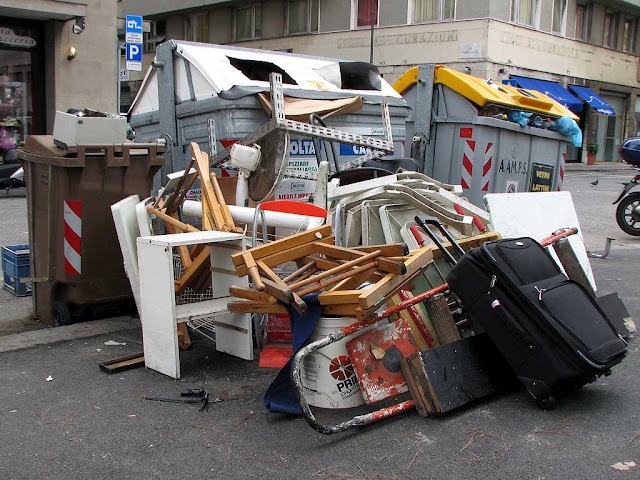 Livorno is not a clean city: people may have spotless houses but are quite capable to throw stuff just outside their front doors.
Livorno is not a clean city: people may have spotless houses but are quite capable to throw stuff just outside their front doors.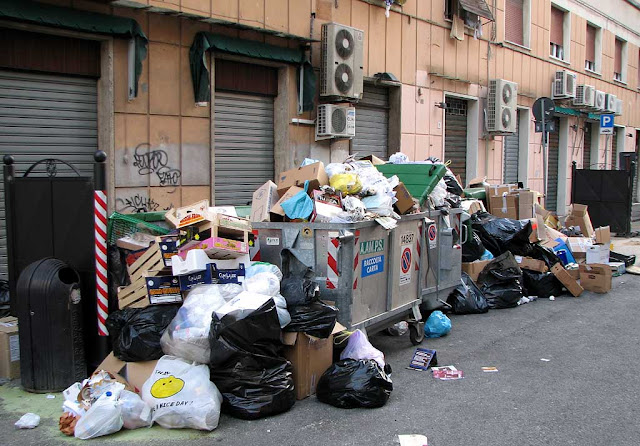 These three pictures were taken within few days in streets no more than few meters away from “Via Grande”. No garbage collectors on strike, just some quite ordinary dumpster overflows...
These three pictures were taken within few days in streets no more than few meters away from “Via Grande”. No garbage collectors on strike, just some quite ordinary dumpster overflows... The last photo was taken from the “Ponte dei sospiri” (Bridge of Sighs), the main access to the city center from the “Porto Mediceo”. Cruise passengers, crossing the bridge, may have a good look at this: perhaps they find it somewhat picturesque...
The last photo was taken from the “Ponte dei sospiri” (Bridge of Sighs), the main access to the city center from the “Porto Mediceo”. Cruise passengers, crossing the bridge, may have a good look at this: perhaps they find it somewhat picturesque...













